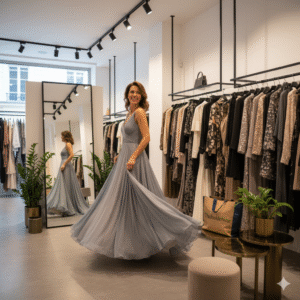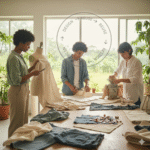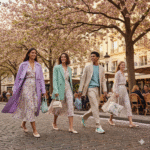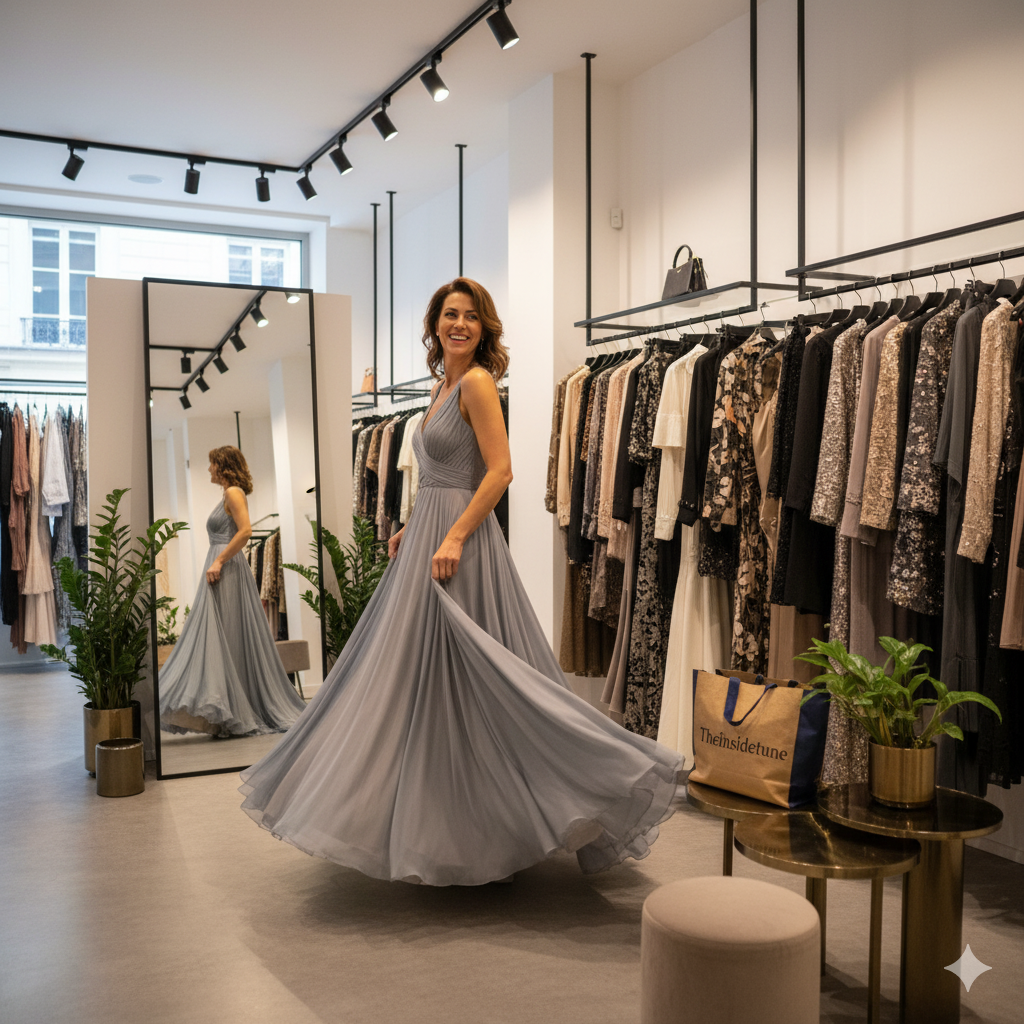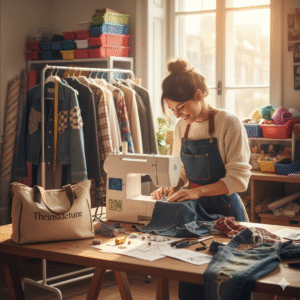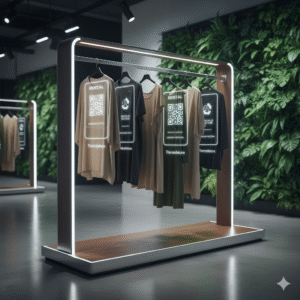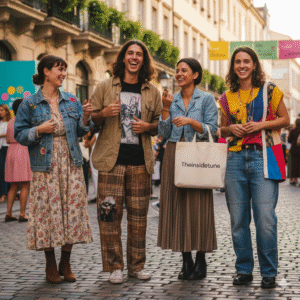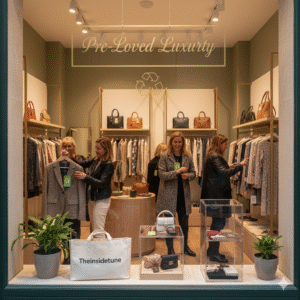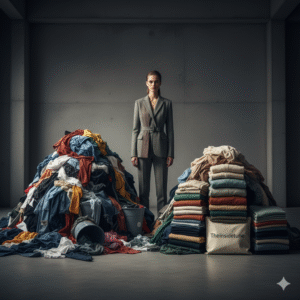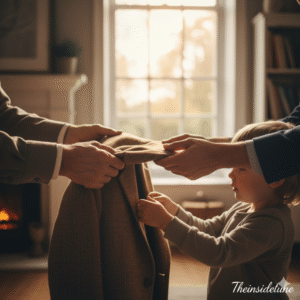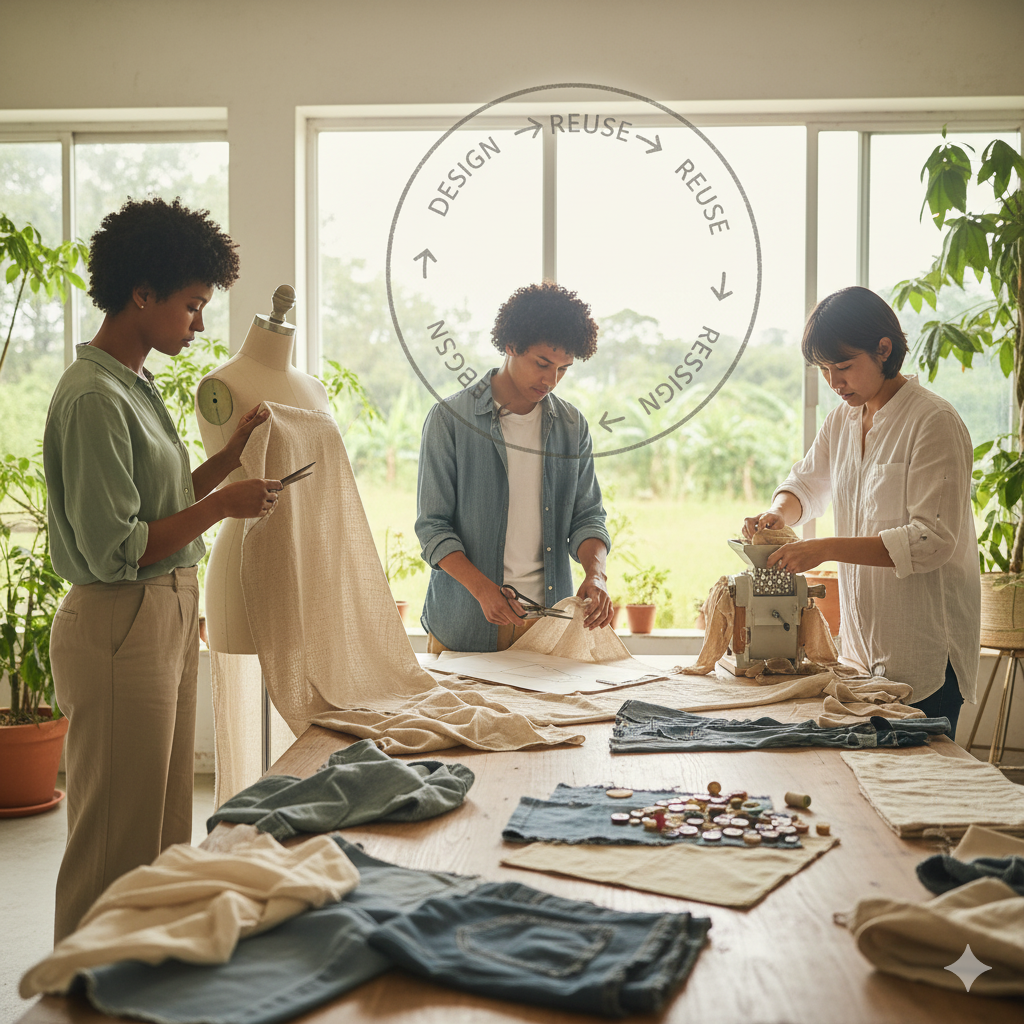Circular Fashion in Europe 2025: From Rentals to the Upcycling Revolution
Introduction: Fashion’s Circular Turn ♻️👗
Fashion has always been more than just the clothes on our backs. It’s identity, culture, and sometimes even quiet rebellion. But here’s the thing: in Europe, 2025, fashion is telling a very different story than it did even a decade ago. And honestly? It’s a story worth paying attention to.
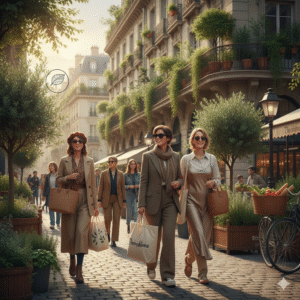
For years, our wardrobes ran on a linear model: brands made clothes at lightning speed, we bought them (sometimes without even thinking twice), wore them a handful of times, and then tossed them aside when trends changed. The formula was simple but damaging: make → wear → throw away. 🚮
It gave us cheap outfits, sure, but it also left behind mountains of textile waste, exploited workers, and an industry that contributes up to 10% of global carbon emissions. To put it bluntly, fashion looked glamorous on the outside but left a trail of problems behind the scenes.
🌍 The Wake-Up Call
By the early 2020s, Europe started to hit pause and ask some uncomfortable questions:
-
Why are luxury brands burning unsold clothes just to keep “exclusivity”? 🔥
-
Why does a t-shirt cost less than a cup of coffee, yet leave behind such a huge environmental footprint? ☕
-
And why are we filling landfills with perfectly good fabric while buying “new” at every turn?
Climate activists, stricter EU sustainability laws, and—let’s be honest—an increasingly eco-conscious Gen Z, pushed the conversation forward. Suddenly, the old idea that wearing something twice was “embarrassing” flipped on its head.
Re-wearing became cool. Renting a designer gown? Chic, not cheap. And that jacket your grandmother rocked in the 70s? Now, it’s vintage gold. 💎
♻️ Enter Circular Fashion
This is where circular fashion steps in—a completely different way of looking at clothes. Instead of being disposable, clothes are designed to be part of a loop: made to last, passed on, rented out, repaired, or reinvented. Think of it like giving clothes a passport instead of a one-way ticket to the landfill. 🌱
And the best part? Circular fashion isn’t about stripping away style or forcing everyone into dull, beige “eco outfits.” Nope. It’s about freedom—freedom to experiment without waste, to enjoy luxury without owning it forever, and to express yourself with pieces that already carry a story.
💡 Why 2025 Feels Different
Europe in 2025 feels like a tipping point. Policy, culture, and consumer behavior are all aligning:
-
Politicians are passing stricter textile waste laws.
-
Luxury brands and high-street retailers are embracing circular models.
-
And everyday people (like you and me) are realizing that sustainability can actually be stylish.
Circular fashion isn’t just some niche sustainability project anymore—it’s becoming the heart of Europe’s fashion revolution. From Paris to Copenhagen, Berlin to Milan, the future of fashion looks less like overstuffed closets and more like shared wardrobes, upcycled treasures, and community-driven style.
So, in this blog post, we’ll dive into:
✨ What circular fashion really means.
✨ How clothing rentals are redefining what it means to “own” fashion.
✨ Why upcycling is turning old clothes into new magic.
✨ The role of tech, culture, and consumer demand in shaping this shift.
Because fashion is never just about fabric. It’s about stories, identity, and the kind of future we want to wear proudly. And in 2025, Europe is leading the way toward a fashion system that’s not just beautiful—but also responsible. 🌿💚
What is Circular Fashion? The Basics 🌱
Okay, let’s pause for a second. We keep saying “circular fashion” like it’s this magical solution—but what does it actually mean? Is it just a fancy buzzword for recycling? Or is there more to it?
The short answer: yes, there’s much more to it. 💡
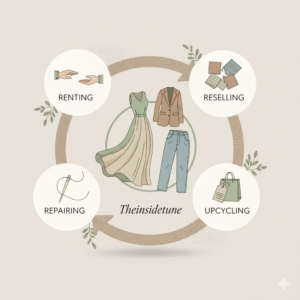
🔄 From Linear to Circular: A Wardrobe Shift
Think of the old fashion model as a straight line:
Take → Make → Wear → Throw Away.
That’s how most of us have been living with clothes for decades. We walk into a store, pick up a trendy top, wear it a handful of times, and then—when it loses its shine—out it goes. Off to the back of the closet, or worse, to the landfill. 🚮
Now, circular fashion flips that line into a loop. Instead of clothing being born just to die, it’s designed and used in ways that keep it in circulation for as long as possible. That might mean:
-
Resale: You buy a dress, wear it, and then sell it on a second-hand app. Someone else gives it a new life. 👗
-
Rental: You borrow an outfit for a wedding, return it, and it gets rented out again and again.
-
Repair: Instead of tossing a torn shirt, you fix it—or get it repaired at a local “fashion clinic.” 🧵
-
Upcycling: An old pair of jeans gets transformed into a chic tote bag or a patchwork jacket.
-
Recycling: When a garment really reaches the end of its life, it’s broken down and turned into new fabric.
See the difference? Instead of clothes having one short life, they get to live multiple lives—like they’ve got nine lives, just like a cat 🐱 but way more fashionable.
🌱 The Principles Behind Circular Fashion
At its core, circular fashion rests on three simple ideas:
-
Reduce → Make fewer, better clothes. Brands focus on quality, not quantity.
-
Reuse → Keep garments in play as long as possible, whether by renting, reselling, or swapping.
-
Recycle → When clothes can’t be worn anymore, their materials get repurposed.
It’s not just about recycling bottles into polyester jackets (though that helps). It’s about redesigning the whole system so waste isn’t even created in the first place.
🛍️ How Circular Fashion Feels for Consumers
Now, you might be thinking: “Okay, cool, but how does this actually affect me when I’m shopping?”
Here’s the thing—circular fashion isn’t about denying yourself. You’re not being asked to live with two plain t-shirts and one pair of jeans forever (unless you want to—minimalists, we see you 👀). Instead, it’s about more options, not fewer.
-
Want to try out a bold designer look without spending thousands? Rent it.
-
Want unique, one-of-a-kind pieces? Shop upcycled collections or thrift vintage.
-
Want to be part of a story? Buy second-hand—because every piece has a past.
-
Want to feel good about your purchases? Choose brands that take clothes back at the end of their life.
It’s fashion that gives you the fun of experimenting, without the guilt of waste. 🎉
🌍 Why Europe is the Perfect Playground for Circular Fashion
Circular fashion isn’t just a “trend” in Europe—it’s a response to real pressure. In 2025, the EU has some of the strictest sustainability laws in the world. Brands have to report their environmental impact, new textile recycling systems are rolling out, and waste bans are pushing everyone—luxury and fast fashion alike—to rethink their strategies.
But beyond policy, Europe just gets it. There’s a strong culture of second-hand markets (hello, Paris flea markets and Berlin thrift shops 🛒✨). There’s pride in craftsmanship, repair traditions, and valuing quality over throwaway culture. Add in Gen Z’s obsession with sustainable chic, and you’ve got the perfect storm for circular fashion to thrive.
👉 In short: Circular fashion isn’t about having less, it’s about having smarter, more meaningful choices. It’s about clothing that lives longer, tells richer stories, and keeps us stylish without destroying the planet in the process.
Why Europe is Leading the Shift 🇪🇺
If there’s one region that has really rolled up its sleeves and said, “Fashion, we need to talk”, it’s Europe. 🌍✨ While circular fashion is gaining traction around the globe, Europe in 2025 is the clear front-runner—and not just because of trends, but because of culture, policy, and consumer mindset. Let’s break it down.
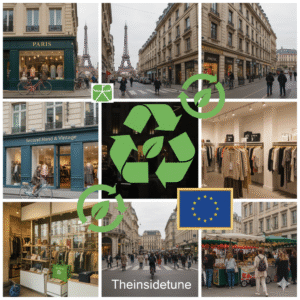
🏛️ 1. Policy Power: The EU Isn’t Playing Around
Europe doesn’t just rely on vibes to change the fashion industry—it’s backed by some of the toughest sustainability laws in the world.
-
Textile Waste Regulations: In many EU countries, throwing away clothes like household trash is becoming a thing of the past. Instead, garments must be collected for recycling or reuse. 🚮➡️♻️
-
Extended Producer Responsibility (EPR): Brands aren’t just selling clothes and walking away anymore. They’re now responsible for what happens after you’re done with their products—repair schemes, take-back programs, and recycling initiatives are part of the deal.
-
The Green Deal & Circular Economy Action Plan: These EU-wide frameworks push industries—including fashion—to cut waste, lower emissions, and shift toward circular models.
This means circular fashion isn’t just a “nice option.” It’s increasingly a legal requirement. 📝
🧵 2. A Culture of Craft and Quality
Europe has always been the home of fashion heritage. From Italian tailoring to French haute couture, from Scandinavian minimalism to British punk aesthetics—the continent knows a thing or two about making clothes that last.
Unlike regions where fast fashion completely dominates, Europe has a cultural memory of craftsmanship and repair:
-
Italians who’ve taken their leather shoes to cobblers for decades. 👞
-
French flea markets filled with vintage treasures.
-
Nordic design philosophies that champion less but better.
This cultural DNA makes it easier for Europeans to embrace circular fashion—it feels like a return to roots, not a radical new idea.
👗 3. Consumers Who Care (and Show It)
Let’s be honest: Europeans can be pretty vocal about what they want—and in 2025, what they want is style without guilt.
-
Gen Z & Millennials are leading the charge. They’ve grown up with climate anxiety, they’re used to second-hand apps like Vinted and Depop, and they’re not afraid to call out brands for greenwashing. 📱💬
-
Luxury buyers in places like Paris and Milan are realizing that exclusivity can also mean sustainability—renting or upcycling couture is no longer seen as “less than.”
-
Everyday shoppers are moving away from cheap hauls. Instead, they’re asking: Who made this? Where will it go after I’m done?
Circular fashion resonates because it matches people’s values: style + ethics = win-win.
🤝 4. Innovation Meets Tradition
Europe isn’t just sticking to old-school practices—it’s marrying tradition with cutting-edge innovation.
-
Berlin has become a hub for upcycling designers who turn discarded clothes into runway-worthy art. 🎨
-
Scandinavia is leading with tech-driven solutions like textile-to-textile recycling and biodegradable fabrics.
-
Paris and Milan are seeing luxury houses pilot rental and resale programs, letting clients buy into prestige without permanent ownership.
It’s this mix of respecting heritage while embracing the future that keeps Europe ahead.
💬 5. Fashion Activism as a Lifestyle
From Greta Thunberg’s influence 🌱 to grassroots movements like Fashion Revolution, Europe’s fashion scene is also deeply tied to activism. Consumers don’t just shop—they protest, they demand transparency, they ask hard questions.
This cultural push means brands can’t afford to ignore circularity. If they try to greenwash, someone will notice—and it’ll be on Twitter (or TikTok) in a heartbeat. 🔥
🌍 Why This Leadership Matters Globally
Europe’s influence in fashion isn’t confined to its borders. Paris Fashion Week, Milan’s luxury houses, and Copenhagen’s Fashion Summit are global stages. When Europe says, “Circular is the future,” the rest of the world listens.
So while circular fashion is happening everywhere, Europe in 2025 is the epicenter of the movement—where policy, culture, creativity, and consumer demand collide to create something powerful.
👉 In short: Europe isn’t just “joining” the circular fashion wave—it’s steering the ship. 🚢♻️ The rest of the blog will dive into how—from rentals to upcycling to tech innovations—but for now, it’s clear: if you want to see circular fashion in action, Europe’s the place to look.
Clothing Rental Services: Fashion Without Ownership 👗🔄
